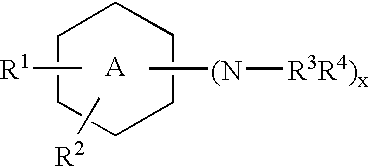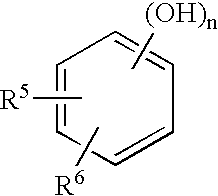Production of low sulfur, moderately aromatic distillate fuels by hydrocracking of combined Fischer-Tropsch and petroleum streams
- Summary
- Abstract
- Description
- Claims
- Application Information
AI Technical Summary
Benefits of technology
Problems solved by technology
Method used
Image
Examples
example
[0152] A Fischer-Tropsch (FT) wax was blended with petroleum derived vacuum gas oil (VGO). The resulting blend comprised 33 weight % FT wax and 67 weight % VGO. The VGO contained greater than 2,000 ppm nitrogen, a hydrocracking catalyst poison, while the blend contained less than 2,000 ppm nitrogen. Properties of the FT wax, VGO, and blend are shown in Table IV.
TABLE IVStream PropertiesFT WaxVGOBlendGravity, ° API40.220.927.2Sulfur, ppm8,0005,400Nitrogen, ppm 3.22,4981,790Wax, wt %1007.338D2887 Distillation, wt % by ° F.ST / 5732 / 771353 / 529442 / 55310 / 30788 / 811577 / 674598 / 7105083974579170 / 90857 / 885816 / 871829 / 86895 / EP898 / 948890 / 926883 / 920
[0153] The blend was hydrocracked at 53.1 weight % conversion below 650° F. over a sulfided NiW / amorphous SiO2—Al2O3 catalyst at 790° F., 0.5 hr−1, 1,000 psig, and 6 MSCF / Bbl H2 to preserve aromatics. Properties of the 300-650° F. diesel product distilled in 45.7% yield are shown in Table V.
TABLE V300-650° F. Diesel Product PropertiesGravity, ° API33....
PUM
 Login to View More
Login to View More Abstract
Description
Claims
Application Information
 Login to View More
Login to View More - R&D
- Intellectual Property
- Life Sciences
- Materials
- Tech Scout
- Unparalleled Data Quality
- Higher Quality Content
- 60% Fewer Hallucinations
Browse by: Latest US Patents, China's latest patents, Technical Efficacy Thesaurus, Application Domain, Technology Topic, Popular Technical Reports.
© 2025 PatSnap. All rights reserved.Legal|Privacy policy|Modern Slavery Act Transparency Statement|Sitemap|About US| Contact US: help@patsnap.com


